Cryostasis PC Game TechDemo – Physics Benchmarking
Test Setup and Benchmark Results
In order to test the game physics in Cryostasis, we used the EVGA GeForce GTX260 Core 216 graphics card and put it against the Radeon HD 4870 1GB. With the latest NVIDIA Forceware drivers you can run a secondary card to do just PhysX, so we also used an EVGA GeForce 9600 GT to be paired with the GeForce GTX 260 to see if it would help performance.
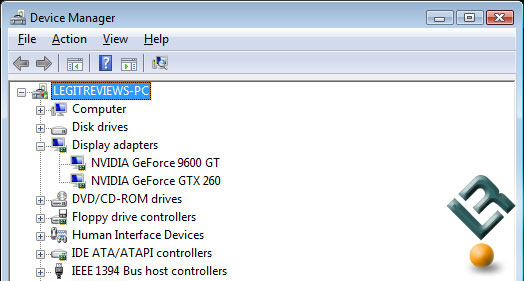
To run a dedicated NVIDIA graphics card for just PhysX you’ll need to install the card along with the drivers used on the primary card. For this review we used NVIDIA Forceware 180.48 drivers.
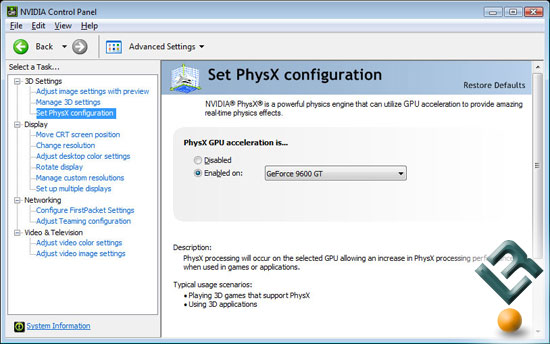
Once the drivers are installed you’ll need to ‘enable’ NVIDIA PhysX on the secondary card, and in order to do that you’ll need to enter the NVIDIA control panel and pick which card you want PhysX to run on. The screen shot above shows that PhysX GPU acceleration was enabled on the GeForce 9600 GT.
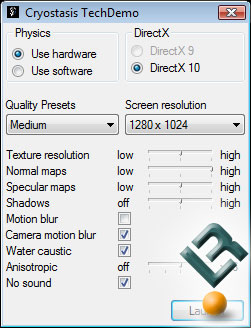
Once we had the three test configurations figured out, we fired up the Cryostasis Techdemo and ran some benchmarks at both 1280×1024 and 1600×1200 with medium quality settings.
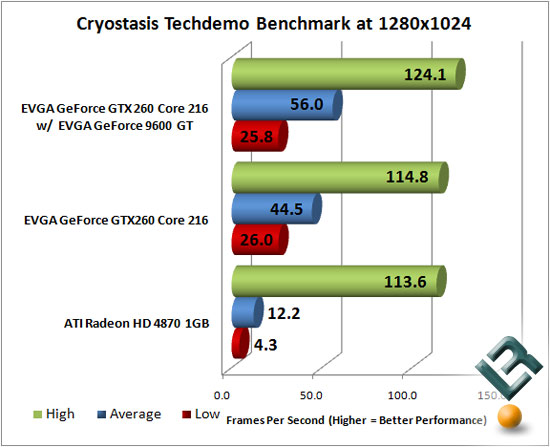
Benchmark Results: It was obvious from the second we started benchmarking the ATI Radeon HD 4870 1GB graphics card that the CATALYST 8.12 drivers had not been optimized for Cryostasis. Cryostasis is part of NVIDIA’s ‘The Way Its Meant to be Played’ program and the game isn’t due out for a couple of months, so the ATI results don’t mean much right now. The NVIDIA performance numbers, on the other hand, should be pretty close to what you’ll see when the game hits store shelves and the numbers are solid. Adding a dedicated PhysX card to the system did improve the average frame rate, which is interesting to see considering we were using a GeForce GTX 260 Core 216 graphics card.
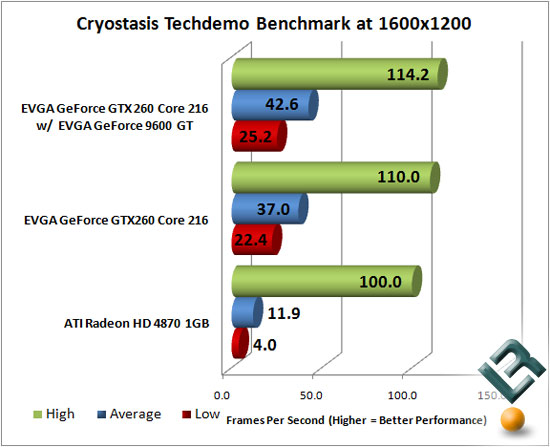
Benchmark Results: With the resolution increased to 1600×1200, and with the same image quality settings, we can see that the dedicated PhysX card didn’t make as big of a difference in the system.
It should be noted that we were concerned with the performance numbers on the ATI Radeon HD 4870 1GB graphics card and contacted ATI yesterday to get a comment from them about the low performance numbers we were seeing. One of the ATI driver team members replied with an e-mail simply stating this:
I have not heard of this game and not sure if we have it. I would just say we will investigate.
That being said, we have not cleared the air as to why the ATI Radeon HD 4870 1GB graphics card didn’t perform so well.

Comments are closed.